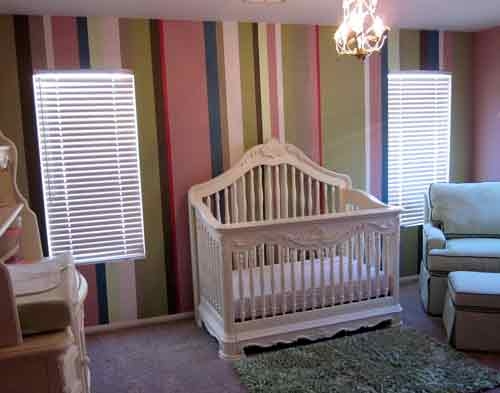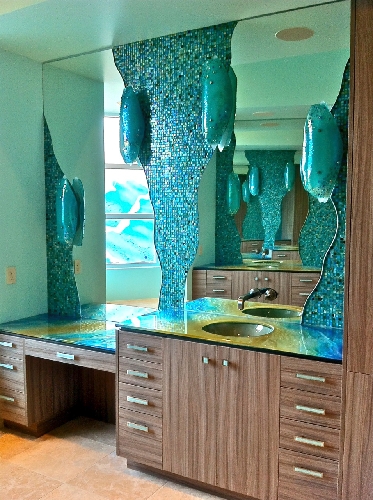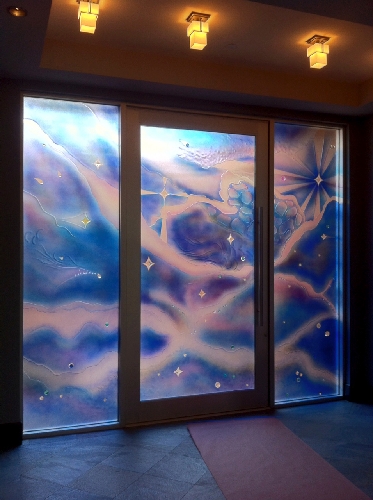Personal galleries
Art comes in many forms. It can be a painting or a sculpture, two dimensional or three dimensional. Most of us have some type of art in our homes, quite often paintings or pictures on the wall.
When it comes to fine art, however, we primarily expect to find it in a gallery setting or a high-end luxury home. But today many artists are transforming ordinary, functional fixtures and walls commonly found in a home into beautiful pieces of fine art.
From murals to countertops and rugs to sink vessels and light fixtures, area artisans are putting their touch on everyday items.
"Fine art is an ideal way to individualize and personalize one's home environment. It creates a sense of style and character that defines you as an individual. It becomes a conversation piece, a discussion of pride and originality," said artist Michael Patrick Thieme, who works under the name Mikel Patrik.
Patrik, who has an architectural background, specializes in precision painting through individual brush strokes. Recently, he re-created and personalized one of his canvas paintings onto the walls of a nursery.
"The translation of fine art into other mediums that become functional elements such as rugs, pillows, fabric, etc., only enhances the exclusivity of the 'original' piece of art; it becomes a status symbol. Many people may be able to get a reproduction or wallpaper but only one person can get the same design in an original acrylic painting," he said.
Patrik sees his art also being transformed into rugs, pillows, upholstery and accessories.
"I've visited many homes that had pretty drapes and carpets, nice photographs of their families, but no art. They lacked statement pieces to express their personality," said Leslie Rankin, who works in glass at her Las Vegas studio, Glassic Art.
She sees her art as both statement pieces and creative solutions to decorating dilemmas.
"Everybody has a space in their home that they are not happy with or don't know what to do with. They just need a creative solution."
Working "backwards," Rankin said she meets with clients to discuss their needs and desires and then creates a piece of art that suits their personality and solves their issue.
Among her recent projects was a bath vanity that was too short. Instead of the homeowners having to replace the vanity, they devised a glass countertop that raised the height and created a wow factor.
She also designed a shower wall that offered privacy as well as eliminated the need to squeegee or wash the glass after each use.
"People have this perception that they have to be Donald Trump to have art in their homes. But they don't," Rankin said. "For a third of what they would have to spend to completely redo something, they can have a piece of custom art."
Rankin said transforming fine art into functional pieces also helps people "justify" some of the costs involved in acquiring a piece. For example, an ordinary bar top can be turned into a statement piece for about 20 percent more.
"Most people will see the art first and be dazzled," she said. "Most artists wake up with a vision and express themselves through their art. Me, I feel more like a surrogate helping people express themselves through my art."
Patrik and Rankin said working directly with an artist can help reduce costs as well. They can adjust the size, scale and scope of the project as needed to accommodate their clients' budgets. They also can customize the colors to fit into a home's décor.
"Each in-place wall mural is specifically designed to work with the room's scale, the client's budget and color palette," Patrik said. "The exciting aspect of the mural concept is that each installation is specific to the client and there will never be two alike nor will it ever be turned into a reproduction or wallpaper."
Patrik's work can be seen at his gallery in Emergency Arts, 520 E. Fremont St., suite 184, or visit www.mikelpatrik.com.
Glassic Art is at 5850 S. Polaris Ave., Suite 700, or visit www.glassicart.com.



















